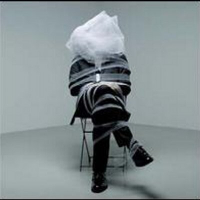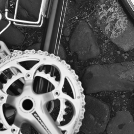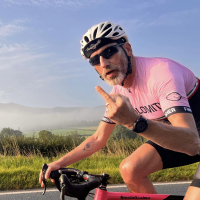New Carbohydrates: "..one of the biggest reasons cyclists are producing such high power"
Comments
-
Im assuming you need the engine of a pro to use up all these carbs before getting any benefit from these new gels vs say the previous generation, or would weekend warriors also benefit?[Castle Donington Ladies FC - going up in '22]0
-
Interesting point. Maybe in a few years we'll have the concept of some riders being "super-responders" to Raspberry Ripple gels!DeVlaeminck said:Im assuming you need the engine of a pro to use up all these carbs before getting any benefit from these new gels vs say the previous generation, or would weekend warriors also benefit?
0 -
Yes though I would also say that pros are better at handling big carb loads regardless so something that is easier on the system is still of value.DeVlaeminck said:Im assuming you need the engine of a pro to use up all these carbs before getting any benefit from these new gels vs say the previous generation, or would weekend warriors also benefit?
It has been my Achilles heel on the occasions I have been fit enough for that to be a factor - body just stops handling the volume of food after a while0 -
Is this your body failing to process what you eat or as others have alluded to earlier, simply that after a long time on the bike, you just don't want to eat or find it physically hard to swallow etc?rick_chasey said:
It has been my Achilles heel on the occasions I have been fit enough for that to be a factor - body just stops handling the volume of food after a whileDeVlaeminck said:Im assuming you need the engine of a pro to use up all these carbs before getting any benefit from these new gels vs say the previous generation, or would weekend warriors also benefit?
In the Blackforest Torq incident I referenced earlier, I couldn't bring myself to swallow but was OK in terms of nutrition (*) once I'd swapped to gels. (Normally I prefer flapjacks as they are a cheaper form of calories and they need to be consumed less frequently than gels, so there's less chance of forgetting to eat, so normally I don't bother with gels.)
(*) Nothing was going to fix the dodgy back or being baked alive, sadly!
0 -
So 200w is equal to 172kcal, but the body is only 25% efficient so the actual energy consumption would be ~ 688kcal.
If you rely 100% on carbs for energy (you don't, not even at a very high intensity) that would need 160 grams of carbs to fuel (4kcal/g of carbohydrate). But even if you got 50% of your energy from fat that is still 90g of carbs per hour. Previously that was considered the upper limit of what was possible to take in.
Basically, even at more modest power numbers, you can still easily burn more calories than you can consume unless really focus on fuel. It matters more for the pros as they are putting out a lot more power...but they are also likely able to utilise fat stores more efficiently which will offset some, but not all, of the increased demand compared to mortals.
Obviously, people can and do ride multiple hours at 200w without consuming 90g of carbs, but if those people are looking for performance they would likely be able to maintain a higher wattage if they did or were able to consume the carbs.1 -
Yeah I get quite nauseous and if I can power through that I can definitely feel the guts going. Not yet had to do a Dumoulin but it's definitely something that could happen.wallace_and_gromit said:
Is this your body failing to process what you eat or as others have alluded to earlier, simply that after a long time on the bike, you just don't want to eat or find it physically hard to swallow etc?rick_chasey said:
It has been my Achilles heel on the occasions I have been fit enough for that to be a factor - body just stops handling the volume of food after a whileDeVlaeminck said:Im assuming you need the engine of a pro to use up all these carbs before getting any benefit from these new gels vs say the previous generation, or would weekend warriors also benefit?
In the Blackforest Torq incident I referenced earlier, I couldn't bring myself to swallow but was OK in terms of nutrition (*) once I'd swapped to gels. (Normally I prefer flapjacks as they are a cheaper form of calories and they need to be consumed less frequently than gels, so there's less chance of forgetting to eat, so normally I don't bother with gels.)
(*) Nothing was going to fix the dodgy back or being baked alive, sadly!
I suspect it is really just lack of training combined with a natural weakness.
Sounds obvious but as a skinny guy I don't ever eat that much.0 -
I dimly recall reading about the benefits of "fasted rides" (in their various forms) when I started training for long distance rides, with the underlying logic being that this conditioned the body to lay down progressively greater stores of glycogen in the muscles and liver. I never really went down this route as I found the whole training experience more effective if I stuffed my face on the way round.joeyhalloran said:So 200w is equal to 172kcal, but the body is only 25% efficient so the actual energy consumption would be ~ 688kcal.
If you rely 100% on carbs for energy (you don't, not even at a very high intensity) that would need 160 grams of carbs to fuel (4kcal/g of carbohydrate). But even if you got 50% of your energy from fat that is still 90g of carbs per hour. Previously that was considered the upper limit of what was possible to take in.
But there probably is some mileage in the theory, based on my experiences running. When training for a half marathon a few years ago, I used to do my weekly long run whilst the kids were doing their 730am Saturday swim session. I always did these fasted as getting up for breakfast at 530am was a non-starter. I struggled badly initially, "bonking" after an hour, but soon built up to running for two hours at a decent pace without any additional fuel, so I could only be running on a combination of glycogen stores and "fat burning". I'd stuff my face for the rest of the day and then be good for a hilly 100k ride the next day.
0 -
I'm a skinny guy too, but eat masses. I do a lot of training though, even when I don't want to, as I don't want to compromise being thin or cut back on my food!rick_chasey said:
Sounds obvious but as a skinny guy I don't ever eat that much.wallace_and_gromit said:
Is this your body failing to process what you eat or as others have alluded to earlier, simply that after a long time on the bike, you just don't want to eat or find it physically hard to swallow etc?rick_chasey said:
It has been my Achilles heel on the occasions I have been fit enough for that to be a factor - body just stops handling the volume of food after a whileDeVlaeminck said:Im assuming you need the engine of a pro to use up all these carbs before getting any benefit from these new gels vs say the previous generation, or would weekend warriors also benefit?
In the Blackforest Torq incident I referenced earlier, I couldn't bring myself to swallow but was OK in terms of nutrition (*) once I'd swapped to gels. (Normally I prefer flapjacks as they are a cheaper form of calories and they need to be consumed less frequently than gels, so there's less chance of forgetting to eat, so normally I don't bother with gels.)
(*) Nothing was going to fix the dodgy back or being baked alive, sadly!
0 -
I think we've crossed over from top level pros to recreational cyclists doing a 100 kms.
Entirely different requirements.The above may be fact, or fiction, I may be serious, I may be jesting.
I am not sure. You have no chance.Veronese68 wrote:PB is the most sensible person on here.0 -
The idea behind fasted rides is to teach the body to burn fat better, i.e. be able to hold higher powers and increase the % utilisation of fat at higher intensities. It does work but it has been proven that it comes at a cost of being able to burn high levels of carbohydrates which allows more power production. Basically, if you can't take in carbs fasted training is good (e.g. stomach problems or perhaps mega-ultra when it's impractical to be eating all the time), if you can take in carbs then doing so will lead to better performance.wallace_and_gromit said:
I dimly recall reading about the benefits of "fasted rides" (in their various forms) when I started training for long distance rides, with the underlying logic being that this conditioned the body to lay down progressively greater stores of glycogen in the muscles and liver. I never really went down this route as I found the whole training experience more effective if I stuffed my face on the way round.
But there probably is some mileage in the theory, based on my experiences running. When training for a half marathon a few years ago, I used to do my weekly long run whilst the kids were doing their 730am Saturday swim session. I always did these fasted as getting up for breakfast at 530am was a non-starter. I struggled badly initially, "bonking" after an hour, but soon built up to running for two hours at a decent pace without any additional fuel, so I could only be running on a combination of glycogen stores and "fat burning". I'd stuff my face for the rest of the day and then be good for a hilly 100k ride the next day.
0 -
Presumably "nirvana" is a training regime that optimally balances the ability to "fat burn", lay down reserves of glycogen and make use of the carbs that you eat during a ride.joeyhalloran said:
The idea behind fasted rides is to teach the body to burn fat better, i.e. be able to hold higher powers and increase the % utilisation of fat at higher intensities. It does work but it has been proven that it comes at a cost of being able to burn high levels of carbohydrates which allows more power production. Basically, if you can't take in carbs fasted training is good (e.g. stomach problems or perhaps mega-ultra when it's impractical to be eating all the time), if you can take in carbs then doing so will lead to better performance.wallace_and_gromit said:
I dimly recall reading about the benefits of "fasted rides" (in their various forms) when I started training for long distance rides, with the underlying logic being that this conditioned the body to lay down progressively greater stores of glycogen in the muscles and liver. I never really went down this route as I found the whole training experience more effective if I stuffed my face on the way round.
But there probably is some mileage in the theory, based on my experiences running. When training for a half marathon a few years ago, I used to do my weekly long run whilst the kids were doing their 730am Saturday swim session. I always did these fasted as getting up for breakfast at 530am was a non-starter. I struggled badly initially, "bonking" after an hour, but soon built up to running for two hours at a decent pace without any additional fuel, so I could only be running on a combination of glycogen stores and "fat burning". I'd stuff my face for the rest of the day and then be good for a hilly 100k ride the next day.0 -
In an ideal world perhaps but I don't think it works like that, pulling the body in one direction pulls it away from the other. Either it's good at burning carbs or it's good at burning fat.wallace_and_gromit said:
Presumably "nirvana" is a training regime that optimally balances the ability to "fat burn", lay down reserves of glycogen and make use of the carbs that you eat during a ride.
0 -
The original article says they still do this...wallace_and_gromit said:
Presumably "nirvana" is a training regime that optimally balances the ability to "fat burn", lay down reserves of glycogen and make use of the carbs that you eat during a ride.joeyhalloran said:
The idea behind fasted rides is to teach the body to burn fat better, i.e. be able to hold higher powers and increase the % utilisation of fat at higher intensities. It does work but it has been proven that it comes at a cost of being able to burn high levels of carbohydrates which allows more power production. Basically, if you can't take in carbs fasted training is good (e.g. stomach problems or perhaps mega-ultra when it's impractical to be eating all the time), if you can take in carbs then doing so will lead to better performance.wallace_and_gromit said:
I dimly recall reading about the benefits of "fasted rides" (in their various forms) when I started training for long distance rides, with the underlying logic being that this conditioned the body to lay down progressively greater stores of glycogen in the muscles and liver. I never really went down this route as I found the whole training experience more effective if I stuffed my face on the way round.
But there probably is some mileage in the theory, based on my experiences running. When training for a half marathon a few years ago, I used to do my weekly long run whilst the kids were doing their 730am Saturday swim session. I always did these fasted as getting up for breakfast at 530am was a non-starter. I struggled badly initially, "bonking" after an hour, but soon built up to running for two hours at a decent pace without any additional fuel, so I could only be running on a combination of glycogen stores and "fat burning". I'd stuff my face for the rest of the day and then be good for a hilly 100k ride the next day.The trend for low carb or fasted training is still a “thing”, but it’s carefully periodized and structured into a training program.
Fasted or low-carb sessions promote the body’s use of fats for fuel. It’s a practice that refines a rider’s all-day engine. But it’s the carbohydrate-rich sessions that break plateaus and build the ability to make the race-winning moves.- Genesis Croix de Fer
- Dolan Tuono0 -
I may be being unfair and taking the quote out of context but
"The trend for low carb or fasted training is still a “thing”, but it’s carefully periodized and structured into a training program. Fasted or low-carb sessions promote the body’s use of fats for fuel. It’s a practice that refines a rider’s all-day engine. But it’s the carbohydrate-rich sessions that break plateaus and build the ability to make the race-winning moves"
does strike me as an odd observation to be being made in 2023 about a professional endurance sport.
Here's why, obviously anecdotally.
In my youth (30-35 years ago) I was a (bad) rower and even in those distant days, we were aware of the need to a) train specifically to be able to make race-winning efforts; and b) "fuel up" for such specific training sessions, even if such fuelling up was no more sophisticated than having seconds of pasta in the work's canteen at lunchtime.
In the days when you were allowed to take children out of school for skiing holidays, our offspring would both maintain a holiday diary to keep their brains active. I clearly remember one entry from my then 7 year old who wrote on the morning of her test on the final day in ski school that week: "I ate a lot for breakfast as I had to fuel up for a big day in ski school". So even 7 year olds know about fuelling up for big sessions.
When both kids were swimming competitively, nutrition through a weekend-long gala was key, as with warm ups, warm downs and racing, they would chug through a lot of metres. You can hardly move at a gala for children munching their way through tuppawares of pasta! (Younger daughter once logged 16k of swimming over a weekend of racing, which involved a lot of porridge, pasta and rice. And thankfully a few medals!) So the need to fuel up properly has long-since been known even in small town age group swimming clubs.
Doubtless there are numerous counter-anecdotes out there. It just all seems a bit odd that decades-old basic nutritional concepts are being presented as something new and radical in pro cycling.0 -
I read an interview with Alex Dowsett and he placed a large emphasis on the performances of current riders being down to the increased carbohydrate intake. His view was categorically that the big stars are clean and that better training plus the huge carb intake was the major difference. I guess with non of us being pro it is impossible to know just how much of this is true.
Anecdotally I have increased the amount I eat on rides now, largely as I was starting to get mild symptoms of hypoglycemia on rides beyond 3-4 hours (which I do 3 times a week). This has had the desired effect of stopping the symptoms but it does also seem to reduce fatigue at the end of rides and allow me to keep a sustained power output and even do harder efforts at the back end. I suspect a lot of us amateurs really do not take on board enough calories when cycling and most of us would benefit from a small increase.0 -
wallace_and_gromit said:
I may be being unfair and taking the quote out of context but
"The trend for low carb or fasted training is still a “thing”, but it’s carefully periodized and structured into a training program. Fasted or low-carb sessions promote the body’s use of fats for fuel. It’s a practice that refines a rider’s all-day engine. But it’s the carbohydrate-rich sessions that break plateaus and build the ability to make the race-winning moves"
does strike me as an odd observation to be being made in 2023 about a professional endurance sport.
Here's why, obviously anecdotally.
In my youth (30-35 years ago) I was a (bad) rower and even in those distant days, we were aware of the need to a) train specifically to be able to make race-winning efforts; and b) "fuel up" for such specific training sessions, even if such fuelling up was no more sophisticated than having seconds of pasta in the work's canteen at lunchtime.
In the days when you were allowed to take children out of school for skiing holidays, our offspring would both maintain a holiday diary to keep their brains active. I clearly remember one entry from my then 7 year old who wrote on the morning of her test on the final day in ski school that week: "I ate a lot for breakfast as I had to fuel up for a big day in ski school". So even 7 year olds know about fuelling up for big sessions.
When both kids were swimming competitively, nutrition through a weekend-long gala was key, as with warm ups, warm downs and racing, they would chug through a lot of metres. You can hardly move at a gala for children munching their way through tuppawares of pasta! (Younger daughter once logged 16k of swimming over a weekend of racing, which involved a lot of porridge, pasta and rice. And thankfully a few medals!) So the need to fuel up properly has long-since been known even in small town age group swimming clubs.
Doubtless there are numerous counter-anecdotes out there. It just all seems a bit odd that decades-old basic nutritional concepts are being presented as something new and radical in pro cycling.
The article isn't saying they've realised fuel is important. We all know that. It's saying they've made recent breakthroughs in the ability to deliver fuel.- Genesis Croix de Fer
- Dolan Tuono0 -
The new part is how many carbs are able to be ingested, not that carbs are helpful for performance. Matteo Jorgensen has mentioned that he eats 150 g/h (& he also needs to take in a huge amount of salt).
@rick_chasey try the Maurten 320 drink mix. Their hydro gel system does seem to work against gastric distress. Maybe it will help you to fuel more.
All of this is dependent on people riding very hard for a long time. I started out riding fasted on all my rides, but with time as my power output improved I've started fueling up more and more and do see it making a difference even at the amateur level when trying to stay with the semi pro's or former pro's at the front of the marathon and fondo races. I'm still working on getting to higher than 90-100 g/h.PTP Champion 2019, 2022 & 20230 -
This was the bit that really piqued my interest:pangolin said:wallace_and_gromit said:I may be being unfair and taking the quote out of context but
"The trend for low carb or fasted training is still a “thing”, but it’s carefully periodized and structured into a training program. Fasted or low-carb sessions promote the body’s use of fats for fuel. It’s a practice that refines a rider’s all-day engine. But it’s the carbohydrate-rich sessions that break plateaus and build the ability to make the race-winning moves"
does strike me as an odd observation to be being made in 2023 about a professional endurance sport.
Here's why, obviously anecdotally.
In my youth (30-35 years ago) I was a (bad) rower and even in those distant days, we were aware of the need to a) train specifically to be able to make race-winning efforts; and b) "fuel up" for such specific training sessions, even if such fuelling up was no more sophisticated than having seconds of pasta in the work's canteen at lunchtime.
In the days when you were allowed to take children out of school for skiing holidays, our offspring would both maintain a holiday diary to keep their brains active. I clearly remember one entry from my then 7 year old who wrote on the morning of her test on the final day in ski school that week: "I ate a lot for breakfast as I had to fuel up for a big day in ski school". So even 7 year olds know about fuelling up for big sessions.
When both kids were swimming competitively, nutrition through a weekend-long gala was key, as with warm ups, warm downs and racing, they would chug through a lot of metres. You can hardly move at a gala for children munching their way through tuppawares of pasta! (Younger daughter once logged 16k of swimming over a weekend of racing, which involved a lot of porridge, pasta and rice. And thankfully a few medals!) So the need to fuel up properly has long-since been known even in small town age group swimming clubs.
Doubtless there are numerous counter-anecdotes out there. It just all seems a bit odd that decades-old basic nutritional concepts are being presented as something new and radical in pro cycling.
The article isn't saying they've realised fuel is important. We all know that. It's saying they've made recent breakthroughs in the ability to deliver fuel.
"But it’s the carbohydrate-rich sessions that break plateaus and build the ability to make the race-winning moves"
This explicitly relates to the need to train specifically to make race-winning moves (i.e. high intensity efforts) and that carb-rich sessions are the key to being able to do this.
Per my observations relating to rowing, these concepts have been around in amateur sport since at least the late 1980s. (And doubtless long before. I only took interest in such things when I started rowing.) So I stand by my statement above that for these to be presented as some novel concepts in respect of pro cycling is somewhat "odd". Maybe it's just cynical marketing hype.0 -
For the last time, it’s not the concept that’s new, its the food created to allow the concept to be maximised.3
-
To me it seems they are saying by doing the right training combined with the right fueling strategy you are able to make race winning moves. So it’s using the new carbs whilst training so your body adapts and is able to absorb higher amounts.wallace_and_gromit said:
This was the bit that really piqued my interest:pangolin said:wallace_and_gromit said:I may be being unfair and taking the quote out of context but
"The trend for low carb or fasted training is still a “thing”, but it’s carefully periodized and structured into a training program. Fasted or low-carb sessions promote the body’s use of fats for fuel. It’s a practice that refines a rider’s all-day engine. But it’s the carbohydrate-rich sessions that break plateaus and build the ability to make the race-winning moves"
does strike me as an odd observation to be being made in 2023 about a professional endurance sport.
Here's why, obviously anecdotally.
In my youth (30-35 years ago) I was a (bad) rower and even in those distant days, we were aware of the need to a) train specifically to be able to make race-winning efforts; and b) "fuel up" for such specific training sessions, even if such fuelling up was no more sophisticated than having seconds of pasta in the work's canteen at lunchtime.
In the days when you were allowed to take children out of school for skiing holidays, our offspring would both maintain a holiday diary to keep their brains active. I clearly remember one entry from my then 7 year old who wrote on the morning of her test on the final day in ski school that week: "I ate a lot for breakfast as I had to fuel up for a big day in ski school". So even 7 year olds know about fuelling up for big sessions.
When both kids were swimming competitively, nutrition through a weekend-long gala was key, as with warm ups, warm downs and racing, they would chug through a lot of metres. You can hardly move at a gala for children munching their way through tuppawares of pasta! (Younger daughter once logged 16k of swimming over a weekend of racing, which involved a lot of porridge, pasta and rice. And thankfully a few medals!) So the need to fuel up properly has long-since been known even in small town age group swimming clubs.
Doubtless there are numerous counter-anecdotes out there. It just all seems a bit odd that decades-old basic nutritional concepts are being presented as something new and radical in pro cycling.
The article isn't saying they've realised fuel is important. We all know that. It's saying they've made recent breakthroughs in the ability to deliver fuel.
"But it’s the carbohydrate-rich sessions that break plateaus and build the ability to make the race-winning moves"
This explicitly relates to the need to train specifically to make race-winning moves (i.e. high intensity efforts) and that carb-rich sessions are the key to being able to do this.
Per my observations relating to rowing, these concepts have been around in amateur sport since at least the late 1980s. (And doubtless long before. I only took interest in such things when I started rowing.) So I stand by my statement above that for these to be presented as some novel concepts in respect of pro cycling is somewhat "odd". Maybe it's just cynical marketing hype.
I don’t think your anecdotal references to swimming or rowing suggest that at all. I would be surprised if there is any events in these sports where you need to fuel whilst racing other than swimming the channel or the similar.0 -
I bet it won’t be the last time.rick_chasey said:For the last time, it’s not the concept that’s new, its the food created to allow the concept to be maximised.
0 -
Interesting research
https://www.bath.ac.uk/campaigns/can-prebiotic-supplementation-increase-carbohydrate-use-during-exercise-join-our-study/Sometimes. Maybe. Possibly.
0 -
I remember these concepts back in the Roman times when they'd eat potatoes and march all day. They didn't squeeze a load of $h1te from a packet.0
-
And they'd have to battle and things.0
-
Make roads0
-
Twenty miles a day, they weren't twonking around in lycra either.
0 -

Not a plastic packet of $h1t in sight.0 -
focuszing723 said:
I remember these concepts back in the Roman times when they'd eat potatoes and march all day. They didn't squeeze a load of $h1te from a packet.
Potatoes come from the Americas and didn't reach Europe until the 16th century
(I'm aware I may be missing a joke)Twitter: @RichN950 -
Yes, the Roman's brought them back. They swam across with them, because they had really good carb efficiencyRichN95. said:focuszing723 said:I remember these concepts back in the Roman times when they'd eat potatoes and march all day. They didn't squeeze a load of $h1te from a packet.
Potatoes come from the Americas and didn't reach Europe until the 16th century
(I'm aware I may be missing a joke)Warning No formatter is installed for the format1 -
Damn it, I knew I should have checked the internet and not relied on my brain.
Anyway, they didn't p1$$ about.1









